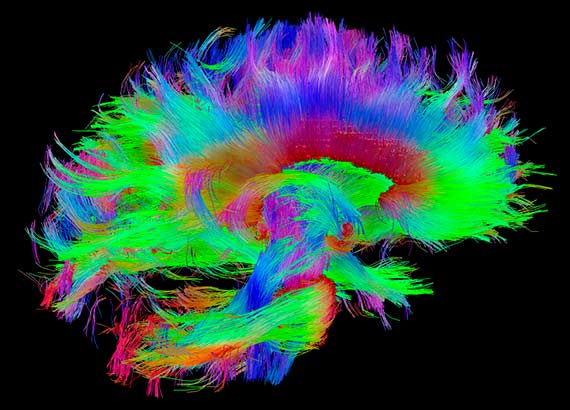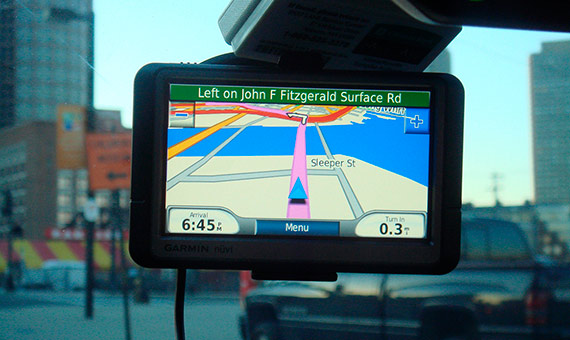Philosophers and scientists have been wondering for centuries how we know where we are and how our brains manage to orient us spatially. A few years ago, three researchers discovered that different types of neurons ‘mapped’ space and allowed us to navigate in it, which earned them the Nobel Prize in Medicine.
Researchers have recently discovered a new brain area related to this private GPS, which is damaged in people with illnesses like Alzheimer’s. As to the eternal question of whether men and women orient themselves in the same way, science has also found an answer.
A discovery worthy of a Nobel Prize
How is the brain able to orient us in a certain location? In the late 1960s, neuroscientist John O’Keefe (New York, November 18, 1939) set out to answer this question and decided to carry out an experiment with rodents.
To do so, he monitored the signals from the hippocampal neurons of a group of rats that moved freely through a room. In analysing the data, O’Keefe discovered that certain neurons—which he named place cells—were activated when the animal believed itself to be in a particular place.

The neuroscientist concluded in 1971 that the hippocampus generated numerous maps thanks to the activity of these cells. His discovery earned him the Nobel Prize in Physiology and Medicine in 2014, shared with the married Norwegian scientists May-Britt Moser (Fosnavåg, January 4, 1963) and Edvard Moser (Ålesund, April 27, 1962).
In 2005, the Nordic couple discovered another component of the brain positioning system, a type of neuron called a grid cell. Its function is to generate a coordinate system that allows precise positioning and spatial navigation.
These grid cells—along with others in the entorhinal cortex—form circuits with the hippocampal place neurons—discovered by O’Keefe—and create an integral positioning system, or in other words, the brain’s GPS.
Neurons that draw maps
“If a route is blocked, this mental GPS can recalculate the right path to the destination,” Nikolai Axmacher, a researcher at the Institute for Cognitive Neuroscience at Ruhr University in Bochum, Germany, tells OpenMind.
Later research on humans confirmed the existence of the system proposed by the Nobel winners. “Scientists have discovered cells comparable to those of place and of grid during the pre-surgical planning of epilepsy patients who were to be implanted with electrodes,” says Axmacher.
Working with epileptic patients with intracranial electrodes placed under the skull to locate the focus of the pathology has the advantage of being able to analyse brain mechanisms in vivo.
Axmacher performed an experiment with ten of these patients who were shown different virtual routes home. Participants had to memorize the path and remember it later. The analysis of brain images confirmed the role of neurons in the learning and recall of these locations.
A new region to orient us

“Our brains contain neurons that keep track of the orientation of the head and the position within an environment, in addition to other neurons that ‘map’ the routes and record how they relate to the environment,” summarizes Douglas Nitz, professor of Cognitive Science at California San Diego University (USA), for OpenMind.
The posterior parietal cortex is another region related to spatial navigation. In animal models, Nitz and his team have discovered neurons in this area that generate complex representations of the rodent’s position along a path.
As for the disorientation suffered by Alzheimer’s patients, research suggests that it could be explained by damage to another region of the brain —the retrosplenial cortex. A recent study, published in the journal Nature Communications, has confirmed that this brain zone is very active during navigation and memory recall.
Are there differences between men and women?
In addition to wondering how the mental GPS works, it is also quite common to think about whether there are differences between the orientation abilities of men and women. Different studies have suggested that sex hormones influence spatial tasks.

Research from the Norwegian University of Science and Technology revealed that when women taking part in the study were given a dose of testosterone under their tongue, some of their spatial skills —such as the representation of directions and mental rotation—improved, but not navigation.
With magnetic resonance imaging, the researchers found that for spatial navigation, men used more of the hippocampus and women, the frontal areas. The study also found that men arrived at their destination faster and that their sense of direction was more effective, which could be explained because they oriented themselves using more cardinal points than women.
Comments on this publication